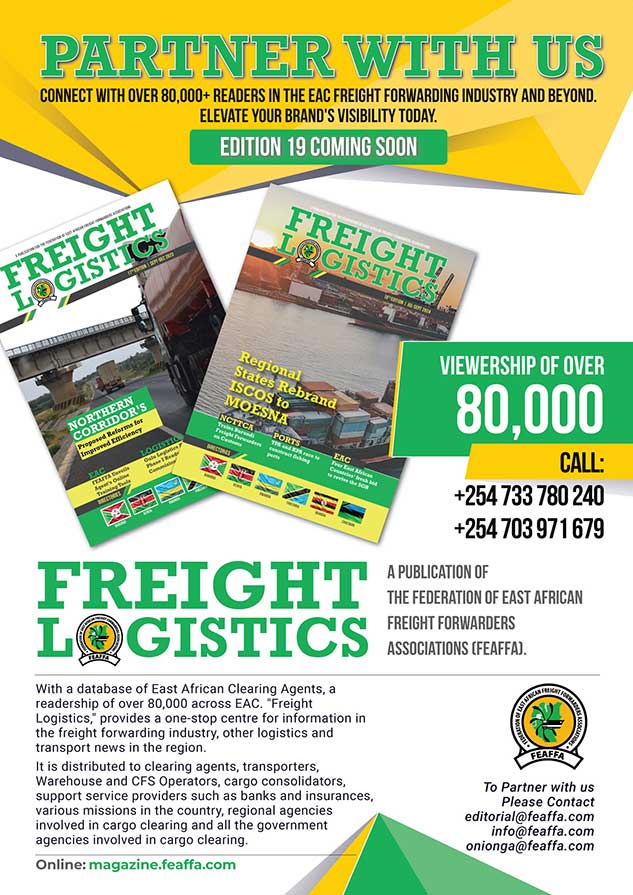The logistics industry players are gearing up for the use of the Integrated Custom Management System (iCMS) as the sea module is set for use. Key government institutions are tying the loose ends in integrating their systems in what is touted as a key game changer in clearing cargo through the Mombasa port.
The project was piloted last year and Express Shipping and Logistics (ESL) cleared its first vessels on the system, with 43,400.835 metric tons of clinker that docked at the port on 3rd August 2019.
During the piloting phase, ESL has handled 41 vessels submitted through iCMS, collecting millions in revenue for Kenya Revenue Authority (KRA).
“We actively participated in KRA engagement workshops during the testing process to align our system to the requirements of iCMS system. This was successful and has given us an edge in transacting through the platform,” Mr Silvester Kututa, ESL MD/CEO told Freight Logistics magazine.
The company handles over 2.5 million metric tons of dry bulk cargo in East Africa and was considered for piloting by its virtue of being a market leader in provision of integrated shipping and logistics
“Piloting ICMS for bulk cargo with KRA presented us an opportunity to comply and ensure our customers take advantage of the immense benefits of iCMS,” Kututa said.
In 2014 and 2015, ESL was the highest Kenya Ports Authority (KPA) revenue contributor in the clearing and forwarding category. It has also been accorded Authorized Economic Operators (AEO) status by the Kenya Revenue Authority (KRA), a privilege that is given to the companies that uphold high standards allowing them to clear goods without going through the rigorous procedures.
KenTrade recently announced November 30th this year as the date of full roll-out of the Sea Cargo Release module as full integration with the KRA was at the final lap. Integration with the KPA KWATOS system is nearing completion as well.
KenTrade Chief Executive Officer (CEO) Amos Wangora told a virtual meeting that discussed significant milestones that the agency has made in the recent months, that he was optimistic that all the agencies involved will put in place all the necessary measures for full rollout of the system.
“Integration between the Kenya TradeNet and KRAs iCMS is almost complete. The only remaining part is the integration with the exports module which we target to complete by the end of October 2020,” Mr. Wangora told the participants.
This module is integrated with KRA iCMS for seamless exchange of clearance data including scheduling of joint verification messages with Partner Government Agencies (PGAs). It has an inbuilt dashboard to facilitate importers to monitor progress of clearance of their goods.
On September 10, 2020, the Cabinet Secretary National Treasury made it mandatory for importers under the East African Community Duty Remission Scheme to lodge their applications online through the Kenya TradeNet System. This order took effect on October 1, 2020.
KRA rolled out iCMS in phases. The air cargo module went live in various airports across the country including Jomo Kenyatta International Airport (JKIA) on March 10, 2019.
iCMS has been developed in line with the World Trade Organization’s (WTO) requirement for the simplification and harmonization of international trade procedures.
The new system once fully rolled out will deliver agility, accuracy, security, and transparency using systems that are empowering rather than restrictive. It is a modern, robust and efficient system that runs on the latest technological platforms which seamlessly connects with KRA’s internal systems and external stakeholders’ systems to achieve faster cargo clearance. It replaces the Simba system, which the taxman has been using for over a decade now to clear goods.
KRA has projected a more than 60 percent reduction in cargo clearance time, which will translate to decongestion at the ports as well as faster delivery of goods to their various destinations that will, in turn, facilitate trade not only in Kenya but also in the East African bloc.
The system further enables tracking of cargo in real-time from the port to the final destination. Consequently, cases of cargo diversion, which cause massive losses to cargo owners and revenue loss will be a thing of the past once the system is fully operational.





